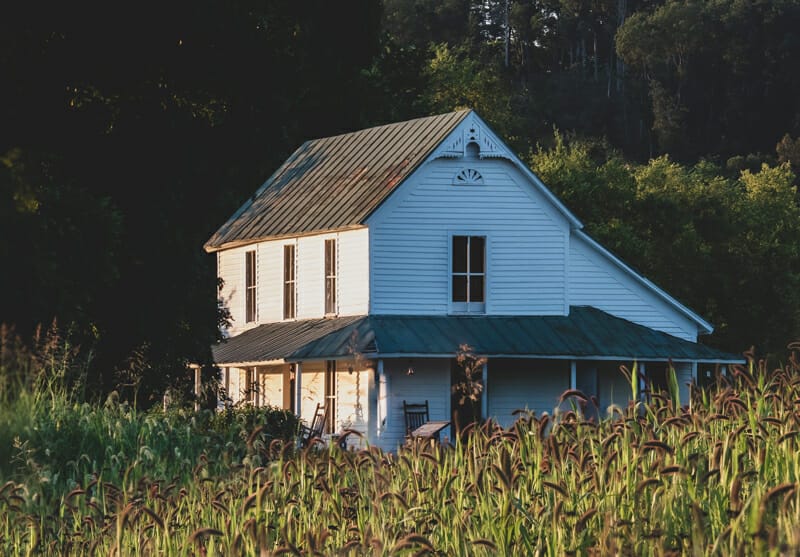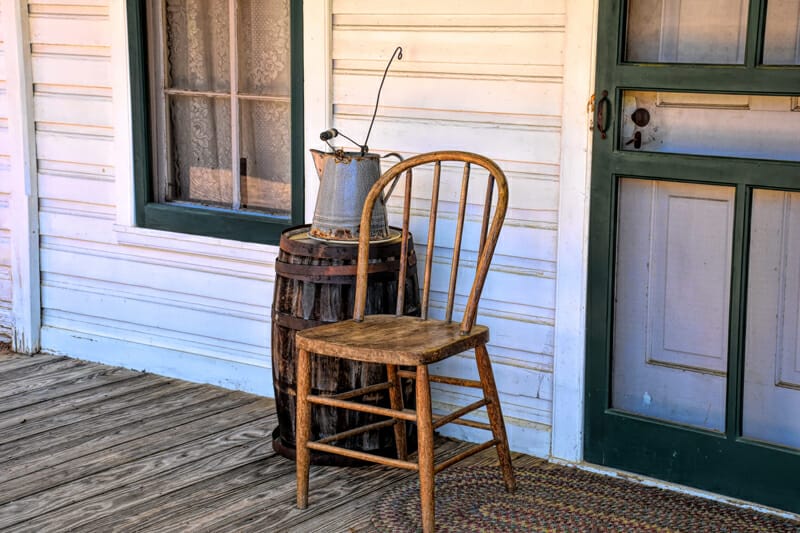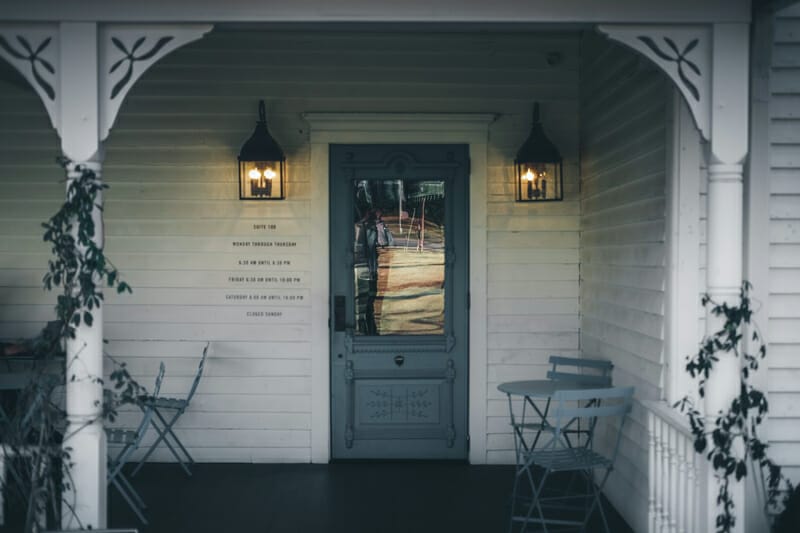Farmhouse style is currently, and inextricably, linked with all things “modern” farmhouse. This style of home, made famous by the tv show “Fixer Upper” and Chip and Joanna Gaines’ products, has permeated even the most suburban of ranch houses. The decor world has decidedly gone “farmhouse” crazy with its shiplap walls, apron front sinks, wire baskets, painted furniture and neutral colors. It’s a style that has become sleek, polished and buttoned up. However, true farmhouse architecture and style can’t be found in the aisles of a big box store.

Real farmhouse architecture stems from a rural, hardworking and utilitarian lifestyle. As much as we like to romanticize “farmhouse” living, these types of homes were originally all about living well while working hard. Farmhouses took advantage of the seasons, whether with center halls that created cross ventilation or large porches that helped them survive the summer months. These homes had large fireplaces and wood stoves to heat during the winter. Oftentimes fireplaces were built in the very center of the home, designed to transmit as much heat as possible to the whole house.
American farmhouses began as early colonial houses. These rural homes weren’t born of floor plans and building codes, they were built by the men and women who lived in them, constructed with their bare hands, and if they were lucky, with the help of a few neighbors. These early American homes were constructed in a simple square floor plan, oftentimes so “wings” could be added on as families grew in size and became multi-generational over the years.

The idea of what constitutes a farmhouse varies depending on the decade and geographical location. The classic farmhouse that usually springs to mind is a two-story home, rectangular in shape, with spacious porches and a simple floor plan. These houses are often painted white, but it isn’t uncommon to see red farmhouses (especially in New England). Original farmhouse style and architecture are characterized by an “undone” quality. The people who lived in these homes made practical use of what they already had. Hoosier cabinets, large tables in the center of the room and pie cabinets were the hallmarks of farmhouse kitchens. Overly large fireplaces, or wood stoves, were the central hub of the house where cooking took place, and families warmed themselves in the winter. These homes were comfortable and filled with dishes and furniture passed down through generations. Interiors had plain practical woodwork and unpretentious features like simple staircases and open room flow.

Most of us don’t have the luxury of true historical farmhouse living, hence the nationwide craze for modern farmhouse style inside our suburban tract homes. Sparse, eclectic kitchens filled with furniture and tables aren’t the most practical, especially given that most of us live with modern-era floorplans. However, there are plenty of ways to incorporate the farmhouse feel into our homes without going “theme” crazy.
When it comes to decor, remember to keep things eclectic. If you decorate with too many antiques, your home will look stuffy. If you lean too modern, it begins to feel cold. The latest trends are moving away from wall “sayings” (avoid over-decorating with quotes or large signage). Also, give that interior barn door a second thought. They’re a feature often installed between the bedroom and bathroom, and without a normal door “closing” or seal, you won’t find much privacy between the two.
While painted furniture pieces are all the rage, incorporating wood stains can give a home a rustic farm feeling. Instead of a large farm table in the center of the kitchen, adding a butcher block countertop to a large island or simple shaker cabinets lends a farmhouse feel to a modern kitchen. Keeping things light and bright, with paint colors based in neutrals like white, cream, beige and gray, adds a farmhouse vibe. Board and batten and shiplap are also ways to incorporate casual character into your home, but tread carefully, these can be overdone.
Farmhouse architecture is a warm and welcoming home style. For the homeowner who doesn’t want an overly fussy or pretentious exterior or interior, it’s an easy, welcoming choice.


